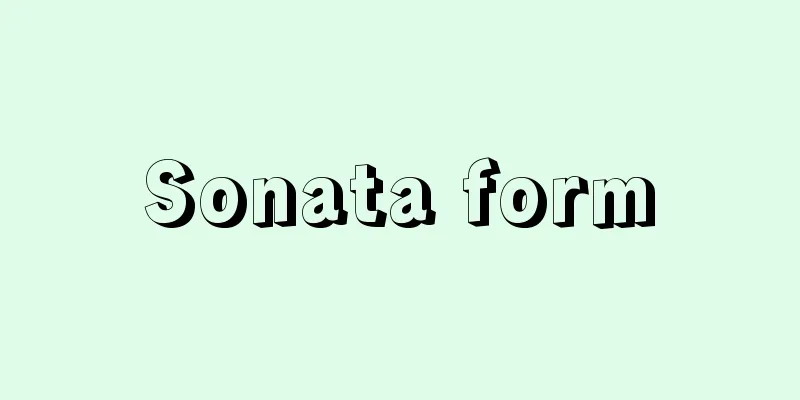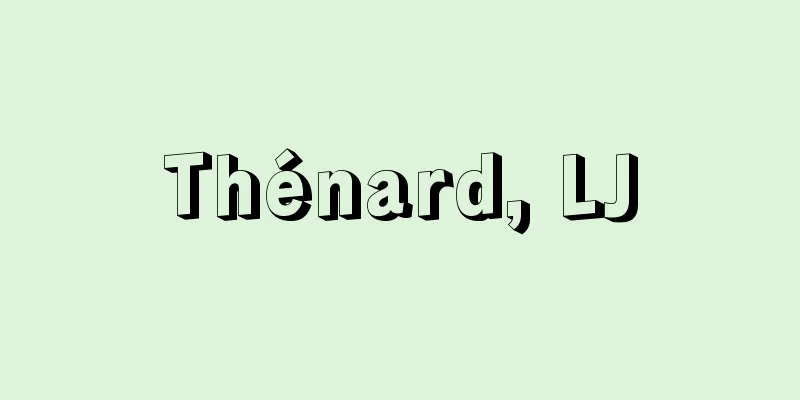Sonata form

|
This form was the preferred form for structuring a single movement of instrumental music from the mid-18th century to the early 20th century. It typically appears in the first movements of symphonies, quartets, and various sonatas, and is sometimes also used as a slow movement or finale. From the viewpoint of formal principles, this form is composed of three parts. The first part is commonly called the exposition, the second part is the development, and the third part is the recapitulation. Sometimes the first part is preceded by an introduction, and the fourth part is a coda. The most important phenomenon in the exposition is that the music that starts in the tonic key moves to the opposing key. In most cases, the opposing key is the dominant key if the tonic key is major, or the parallel major key if the tonic key is minor. In the latter case, the dominant key may also play the role, and in the 19th century, the use of a key that is a third to the tonic key (a third key) or other keys as the opposing key has become more common. In any case, the exposition is composed of a part that is stable in the tonic key, a part that moves from the tonic key to the opposing key, and a part that is stable in the opposing key, and proportionally, the time that the tonic key dominates is not long. Based on this tonal progression, several groups of melodies with distinctive characteristics called "themes" appear. There is no set number, but generally, the part dominated by the tonic key is often a single, unified melodic piece, while the part dominated by the opposing key is usually made up of several melodic groups. The development section is where the melodic material that appeared in the exposition is repeated, transformed, and developed. However, there may be sections that do not have a direct relationship to the exposition in terms of melodic material. The melodic material and how it is handled change over a period of a few or a dozen bars. The size and number of these small sections vary depending on the concept of the piece. From a tonal perspective, the development section follows a very free course without any rules, but generally the appearance of the tonic key is carefully avoided, and a return to the tonic key is prepared at the end. The recapitulation section "reproduces" the main key, first of all. The main key is then generally maintained throughout the entire piece, and sonata form is able to maintain tonal balance for the first time by making a full appearance of the main key, which rarely appears except at the beginning of the piece. As for the melodic progression, the recapitulation section follows the same order as the exposition section, but there are many examples where the progression is partially different from that in the exposition section, and this became common later. It is impossible to pinpoint when, by whom, and how the principle of sonata form was formed. This is because the sonata form was established from the early to late 18th century by integrating the formal features of various musical genres at that time, and it does not have a single origin. Furthermore, there are various gaps in our understanding of the overall picture of musical production in this era, and we have not yet been able to fully unravel the influences, such as the route by which a certain formal idea was transmitted. In any case, the direct basis of the sonata form was the two-part form (part 1 [main key-dominant key], part 2 [main key-main key]) in which two parts are repeated, which was widely seen in dances in the Baroque period. These two parts were initially of equal size, but the second part gradually grew in size, and eventually the second part was divided into a part that was not the main key and a part in the main key. Moreover, the latter half of the second part was a near-unaltered repetition of the first part in the main key, so that the second part was divided into a development section and a recapitulation section. In other words, the transition from a two-part structure to a three-part structure was an important point for the establishment of the sonata form. Moreover, the essential feature of the three-part structure was the return of the main key and theme. In addition, it is noteworthy that in the first half of the second part (development section), some of the material from the first part appears in a different form and in a different key, although not completely. At the same time as the formation of the overall framework of the form, in the first part, formal characteristics such as the arrangement of the melodies (themes) as a single coherent part and the contrast between the melodies are also born. In this way, the main formal characteristics of the sonata form were all present by the middle of the 18th century, but it was in the works of Haydn and Mozart around 1770 that they coexisted in the same piece and appeared thoroughly, that is, the sonata form fully appeared as a complete formal principle. Moreover, their instrumental pieces almost always contained a movement in this form, and sometimes up to three movements out of four were written in this form. After Beethoven, 19th century composers further expanded and individualized this form, and it gained a prominent importance as a means of forming instrumental pieces. [Shigeo Osaki] Source: Shogakukan Encyclopedia Nipponica About Encyclopedia Nipponica Information | Legend |
|
18世紀中ごろから20世紀初頭まで、器楽曲の一つの楽章を構成するうえで好んで用いられた形式。シンフォニー(交響曲)やクァルテット(弦楽四重奏)、各種のソナタなどの第一楽章に典型的に現れ、ときには緩徐楽章やフィナーレにもよく使われた。 形式原理という観点からこの形式を眺めてみると、大きく三つの部分から成り立つ。第一部は提示部、第二部は展開部、第三部は再現部などと通称されている。第一部の前に序奏、そして第四部として終結部(コーダ)がつくこともある。提示部におけるもっとも重要な現象は、主調で始まった音楽が対立調へ移行するということである。対立調というのは、比較的多くの場合には、主調が長調であれば属調、主調が短調であれば平行長調であるが、後者においても属調がその役割を果たすときがあり、また19世紀に入ると、主調と三度の関係にある調(三度調)やその他の調が対立調として用いられることも増えてくる。いずれにしても提示部は、調的にみれば、主調に安定している部分、主調から対立調へ移っていく部分、対立調に安定する部分からなっており、比例的にみれば主調が支配している時間は長くない。このような調的経過を基盤にして、「主題」とよばれる際だった特徴をもつ旋律群がいくつか登場する。その数は決まっていないが、一般に、主調の支配する部分は旋律的にもまとまった一つのものとなっていることが多く、それに対して、対立調の支配する部分はいくつかの旋律群から形成されるのが普通である。 展開部は、提示部に現れた旋律素材が、あるいは反復され、変形され、展開される部分である。しかし旋律素材の点で、提示部と直接的な関連をもたない部分もありうる。数小節ないし十数小節の単位で、扱われる旋律素材やその扱われ方が変化していく。その小部分の規模や数は、楽曲の構想によってさまざまである。調的にみると、展開部は規範のない、きわめて自由な経過をたどるが、一般的には主調の登場は慎重に回避され、最後に主調の回帰が準備される。 再現部で「再現」するのは、第一に主調である。その後、主調は大筋において最後まで貫かれるが、こうして、楽曲の冒頭以外ではほとんど現れることがなかった主調が全面的に登場することによって、ソナタ形式は初めて調的なバランスを保ちうるのである。旋律的な経過としては、再現部には、提示部に出現した素材がほとんどそのままの形で順を追って現れるのだが、提示部における経過とは部分的に異ならせようとする例も少なくないし、のちにはそれが一般的となる。 こうしたソナタ形式の原理が、いつ、だれによって、どのようにして、形成されていったのかということを指摘するのは不可能である。なぜなら、18世紀の初頭から後半にかけて、当時の種々の曲種にみられる形式的特徴が総合されてソナタ形式というものが成立していったからであり、単一の起源をもつわけではないからである。また今日、この時代の音楽生産の全体像の把握にはさまざまな間隙(かんげき)があって、一つの形式的発想がどのような経路で伝えられていったかといった影響関係などを、完全に解きほぐすに至っていない。 いずれにしても、ソナタ形式の直接の基盤となったのは、バロック時代の舞曲などに広範にみられた、両部分が反復される二部形式(第一部〔主調―属調〕第二部〔属調―主調〕)である。この両部分は初め均等の規模であったが、しだいに第二部が肥大していき、やがて第二部は主調ではない部分と主調の部分に大きく二分されて、しかもその後半部分は、第一部を主調でほとんどそのまま繰り返すという形をとることによって、第二部は展開部と再現部に分裂したのである。すなわち、ソナタ形式の成立にとっては、二部分構造から三部分構造への転換が一つの重要なポイントである。しかもその三部分構造は主調と主題の回帰を本質的特徴としていたのである。加えて、その第二部の前半(展開部)で、不徹底ではありながらも、第一部の素材の一部が形を変えられて、調を変えられて出現するのは注目される。こうした形式全体の枠組みの形成と同時に、第一部では、旋律群(主題)のまとまった一つの部分としての整備、旋律群相互の対比といった形式特徴も同時に生まれてくる。こうして18世紀なかばまでにソナタ形式の主要な形式特徴は一通り出そろうが、それらが同一楽曲に並存し、しかも徹底して現れる時期、すなわちソナタ形式が一つの完成された形式原理として全面的に姿を現すのは、1770年前後のハイドンやモーツァルトらの作品においてであろう。しかも彼らの器楽曲はほとんどかならずこの形式による楽章を含み、ときには全四楽章のうち三楽章までがこの形式によって書かれていることもある。ベートーベン以後19世紀の作曲家たちによってこの形式はさらに規模が拡大され、個性化されて、器楽曲の形成手段として際だった重要性を獲得した。 [大崎滋生] 出典 小学館 日本大百科全書(ニッポニカ)日本大百科全書(ニッポニカ)について 情報 | 凡例 |
<<: Sonatine - sonatina (English spelling) Italian
>>: Sonata (English spelling) sonata English
Recommend
Maruha Co., Ltd. - Maruha
The largest fishery company. It started as Hayashi...
Fresh cultivation - pond making
Also called "ikidukuri." Also written as...
Hattori Fusho
Year of death: August 15, 1908 (Meiji 41) Year of ...
Gots, MR (English spelling) GotsMR
...Among them, the Socialist Revolutionary Allian...
Stimulant amine - Stimulant amine
A general term for a group of compounds such as am...
Blue stick - Aobou
...When using it, it is pressed against the surfa...
aging
This refers to the change that occurs over time w...
Student Labor Mobilization - Gakukinro Doin
The forced mobilization of students to the industr...
Parakeet (Parakeet) - Parakeet (English spelling)
A general term for birds in the Psittacidae family...
Gakurin Higo - Gakurin Higo
...Originally, it was called "hidden words,&...
Alstroemeria peregrina - Alstroemeria peregrina
...The clustered flowers have various dark markin...
Einhard - Einhart (English spelling)
Frankish court scholar and biographer of Charlema...
guerres de Religion (English spelling) guerresdeReligion
...Armed conflict between Catholics and Protestan...
British thermal unit
⇒ Beat-to-unit (BTU) Source: About Shogakukan Digi...
Rotating mill - Rotating mill
…Rod mills are more suitable for coarse grinding ...









